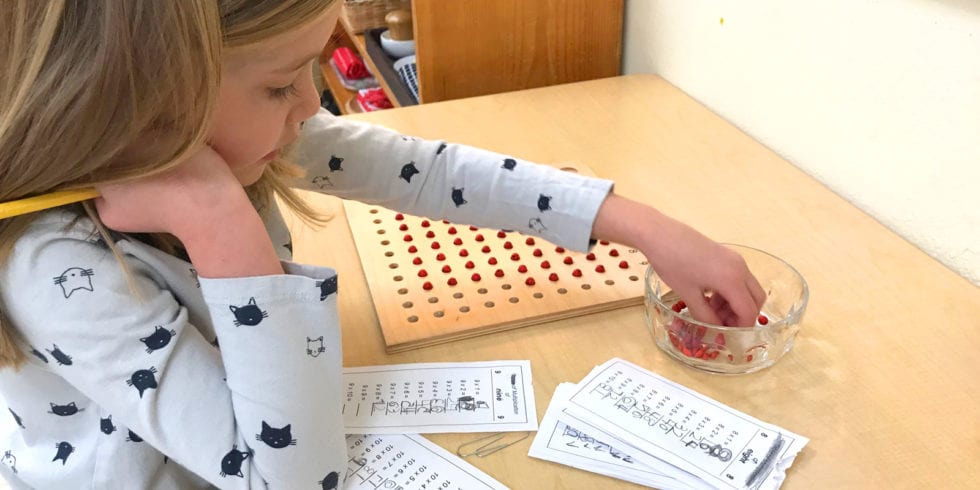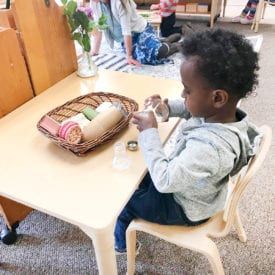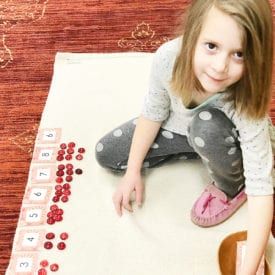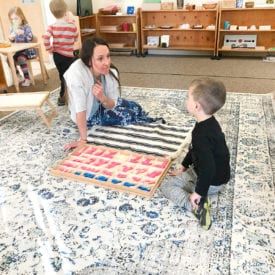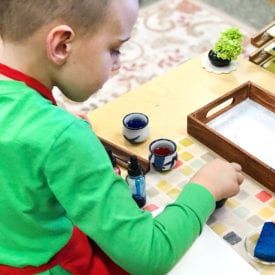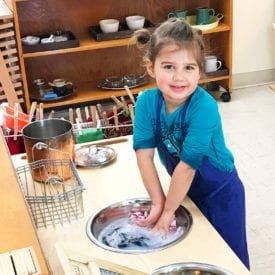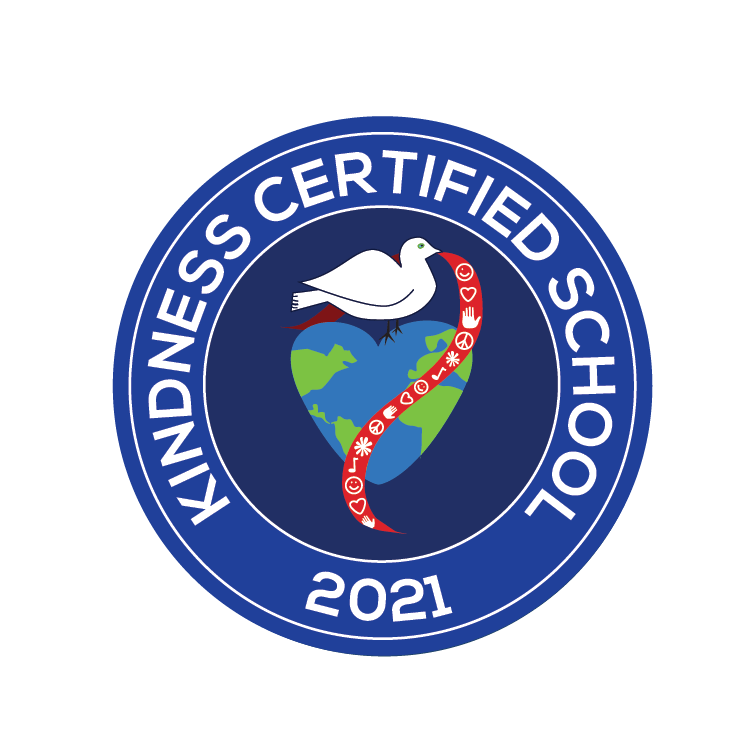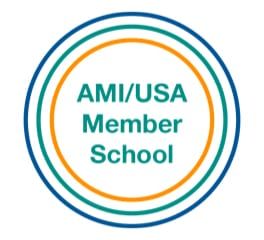Primary Level
Age 3 - Kindergarten
The Montessori Primary Program
Serving children ages 3 through Kindergarten, the Montessori Primary Program strives to be a home away from home for your child. Here, young minds choose their own work from an array of self-teaching materials (or manipulatives) displayed on open shelves. After choosing a “work” from a shelf, the child returns to a dedicated workspace—either a table or a natural fiber mat placed on the floor. Upon completion of the “work,” he or she returns the material to its place on the shelf and the cycle continues.
Over time, children in Primary classrooms exhibit a tremendous ability to apply themselves with a high degree of concentration and focus. As a child becomes accustomed to working in a Montessori environment and community, the child becomes self-disciplined, orderly and focused.
The Absorbent Mind
Children in the Primary Program possess what Dr. Montessori called the Absorbent Mind—the ability to absorb all aspects of one’s culture and environment without effort or fatigue. As an aid to this period of the child’s self-construction, it is common for children to choose materials that are designed to be used by one student at a time. That said, there are also materials that are designed to be explored by two or three children at a time.
The following areas of activity cultivate the child’s adaptation and ability to express and think with clarity:
- Practical Life: Practical life exercises instill care for self, for others, and for the environment. Activities include many of the tasks children see as part of the daily routine in their home, such as preparing food and washing dishes, along with exercises of grace and courtesy. Through these tasks, children develop muscular coordination, enabling movement and the exploration of their surroundings. They learn to work at a task from beginning to end and develop their powers of control and concentration.
- Sensorial: Sensorial materials serve as tools for development. Children build cognitive skills and learn to order and classify impressions by touching, seeing, smelling, tasting, listening, and exploring the physical properties of their environment.
- Language Arts: Language arts development is vital to human development. The Montessori environment is rich in oral language opportunities, allowing the child to experience conversations, stories, and poetry. The sandpaper letters help children link sound and symbol effortlessly, encouraging the development of written expression and reading skills. To further reading development, children are exposed to the study of grammar.
- Cultural: Cultural activities include an exploration of Geography, Continents, History, Life Sciences, Art, and Music. These topic areas are presented as extensions of the sensorial and language activities. Children learn about people and cultures in other countries with an attitude of respect and admiration. Through familiarity, exploration, and discussion, children develop a reverence for all life. The comprehensive art and music programs give children every opportunity to enjoy a variety of creative activities, as well as gain knowledge of the great masters. Instruction in a foreign language, such as Spanish, may be incorporated within the classroom materials. With the aid of a bi-lingual teacher, instruction in a foreign language may be accomplished daily.
- Mathematics: Mathematics is foundational in a Montessori primary classroom and activities in this area help children learn and understand the concepts of math concretely through the use of manipulatives. This work helps children internalize mathematical concepts, prepares them for later abstract reasoning and helps to develop problem-solving capabilities.
- Peace Education:Peace Education is presented to children across all levels in a Montessori school, and will be described briefly here. Typically peace education is presented as including a) inner peace, b) peace in community (the classroom), c) global peace, and d) peace for the natural world. Conflict resolution skills, listening, communication, respect, and inclusion are modeled extensively for children in all classrooms, regardless of level.
“Our son is thriving at this school. We couldn't be happier with the quality of his education.”
- Parent / Guardian
A Typical Primary School Day
| 7:00 – 8:00 | Before Care (if needed) |
|---|---|
| 8:00 – 8:30 | Arrival/Drop-Off |
| 8:30 – 11:30 | Morning Work Cycle/Snack |
| 11:30 – 12:00 | Lunch |
| 12:00 – 1:00 | Outdoor Time |
| 12:30 | Half Day Dismissal |
| 1:00 – 1:30 | Rest Time |
| 1:30 – 3:00 | Afternoon Work Cycle |
| 3:00 – 3:30 | Dismissal |
| 3:00 – 6:00 | After Care (if needed) |

